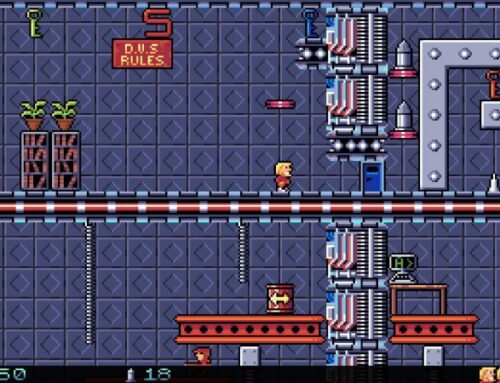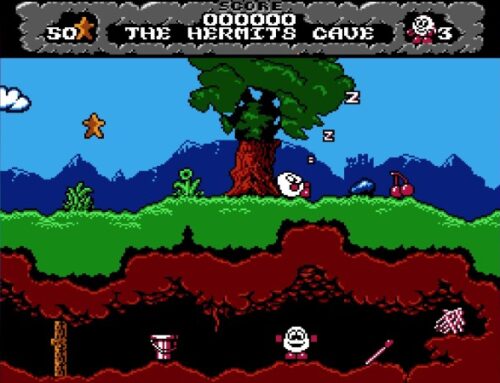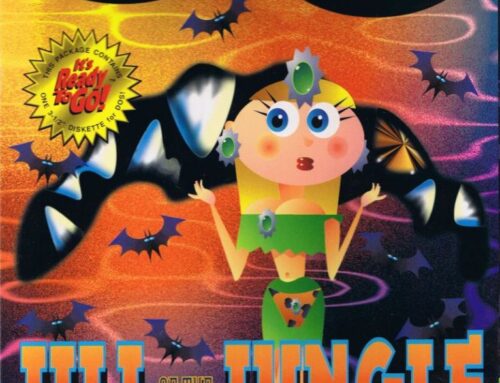Namco is a company that consistently surprises me. Every time I think I have a pretty good handle on the games they’ve released over the years, I discover a new one that I’d never heard of before — and which ends up becoming something of a new favourite. Such is the case with Phozon, which recently got a rerelease through Hamster’s Arcade Archives series on consoles.
Phozon was originally released in 1983, and only ever hit Japanese arcades, which might account for why it will probably be unfamiliar to most players in the west. That said, it has enjoyed one previous western release since its original appearance in arcades; prior to its most recent Arcade Archives incarnation, it appeared on 1997’s Namco Museum Vol. 3 for PlayStation. Back in Japan, it also appeared as part of the ill-fated Namco Arcade app for iOS and Android in 2012, which actually demanded players pay up per credit rather than just buying the games outright.

In Phozon, you take on the role of the Chemic, a small black atom covered with red spikes, just waiting to fuse with floating Molecs. Your aim in each of the game’s “steps” is to attach Molecs to the Chemic in order to match the arrangement shown in the middle of the screen; naturally, the Molecs are moving around, so you’ll need to time your approach carefully to ensure you impale them on the right pointy bit, and if you miscalculate you can release the last Molec you captured in an attempt to try again.
There are a few things aiming to throw a spanner in the works, though; firstly, there’s only a limited number of Molecs per stage, and if you fail to create the appropriate arrangement before all the Molecs have buggered off, you need to play the step again. More significantly, you are hindered in your efforts by the Atomic, a malevolent glob of spheres that wants nothing more than to stop you from happily impaling unsuspecting Molecs on your appendages.
For the most part, the Atomic floats around and gets in the way, causing you to lose a life if it makes direct contact with the Chemic at the centre of your arrangement. But as Phozon’s levels progress, it becomes a tad more active; it’ll split itself apart and recombine in an attempt to catch you unawares, and in later stages it even starts firing radiation blasts at you. Thankfully, you can fight back by capturing matching-coloured Molecs and grabbing a Power Molec, which affords you a brief stint of invincibility — though this shouldn’t be relied on too heavily!

Phozon is split into “worlds”, each of which consists of three steps. After the third step in a world, you’re presented with the obligatory Namco “Challenging Stage”, which allows you to take revenge on the Atomic by blasting an endless supply of Molecs out in four directions; your aim is to destroy all of the spheres that make up several Atomics before they escape — or before any of them manage to nab your Chemic. As in other Namco Challenging Stages, a perfect performance — in this case, successfully shooting all Atomics — nets you a big score bonus, and is worth mastering if you want to climb the leaderboards.
Phozon is a tricky game to get to grips with initially. Many players will likely find attaching the Molecs to the correct part of the Chemic to be a little challenging to begin with, but it gets easier with practice. And with the score value for completing each step escalating considerably with every successful formation, spending just a little time figuring out how best to play the game will result in some impressively substantial scores.
As per usual, the Arcade Archives release comes with several different ways to play. The Original mode allows you to play the arcade version in its original form as well as tweaking a number of settings such as difficulty, score boundaries for getting extra lives and whether or not the speed of the game is authentic to the original machine. Playing on default settings allows your score to be recorded on online leaderboards.

Hi-Score Mode, meanwhile, provides you with a single credit, the inability to pause without having to restart a run, and the game automatically plonked on default settings. In this mode, there’s a constantly visible leaderboard on the right of the screen showing you how you’re stacking up against your rivals — though as with other Arcade Archives releases, this isn’t updated in real time; you’ll need to submit your score and check the leaderboard to update it if you beat your previous best.
Finally, Caravan Mode gives you a five-minute time limit to score as many points as possible. Inexperienced players will likely crash and burn out of their game well before the five minutes are up, but once you get to grips with the game this can be a fun way to test your skills — those Challenging Stages become particularly important, as does completing each of the main steps as quickly as you can so you can net the maximum possible number of those tasty clear bonuses.
Phozon probably won’t be for everyone; its abstract presentation and challenging initial difficulty curve will probably put some people off right away. It’s not a particularly impressive arcade game to look at or listen to — which may account for why it never made it to the west — but it does play very well indeed, and is something a bit different from the other games of the era. And for that reason alone, it’s worth giving it a shot.
Oh, and if you were wondering; no, it’s one of the few Namco games that isn’t part of the unified UGSF timeline!
Phozon is available now for Nintendo Switch and PlayStation 4.




